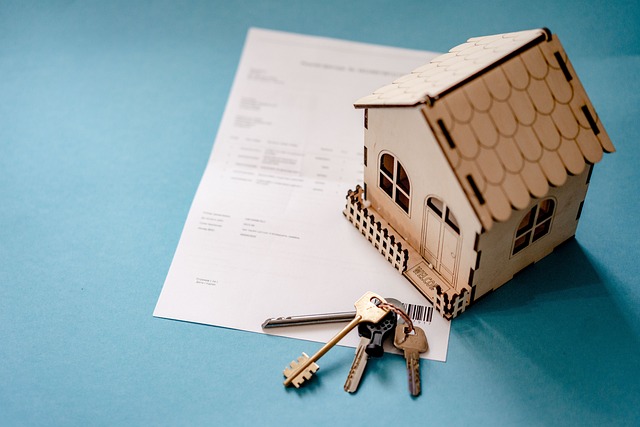Address Occupant Lookup (AOL) is a critical process for identifying and verifying individuals or entities associated with specific addresses, used across sectors like housing authorities, utilities companies, property management, and real estate. It combines multiple data sources while adhering to confidentiality protocols and privacy laws. Challenges include address standardization and dynamic occupancy changes. Technological advancements have improved AOL significantly, offering real-time, accurate occupant information through advanced algorithms and cross-referenced datasets. Accurate occupant data benefits businesses in delivery services, utility fraud prevention, emergency response efficiency, and personalized customer experiences. Implementing a robust AOL system with machine learning models, integrated data sources, address validation, automated updates, and best practices ensures accuracy and reliability. Future trends include AI integration, IoT, predictive analytics, and stronger security measures to meet evolving privacy regulations.
“Unraveling the intricacies of Address Occupant Lookup (AOL) is essential for modern property management and real estate practices. This article delves into the significance of AOL in streamlining operations, enhancing tenant experiences, and improving asset valuation. By exploring traditional lookup challenges, we highlight the transformative power of technological innovations like data analytics and automation.
We’ll guide you through implementing efficient systems, sharing best practices, and anticipating future trends in AOL to ensure optimal property management.”
- What is Address Occupant Lookup?
- Why is it Important for Property Management and Real Estate?
- The Challenges of Traditional Lookups
- Technological Advancements in Address Occupant Data Retrieval
- Benefits of Accurate Occupant Information
- Implementing an Efficient Address Occupant Lookup System
- Best Practices and Future Trends
What is Address Occupant Lookup?

Address Occupant Lookup (AOL) is a critical process that involves identifying and verifying the individuals or entities currently associated with a specific residential or commercial address. It goes beyond simply finding an occupant’s name on public records; it delves into confirming their presence, status, and even details about their stay at that location. This procedure is often used by various sectors for different purposes—from housing authorities checking tenant occupancy to utilities companies verifying billing addresses.
AOL is a complex task due to the dynamic nature of address changes, occupant turnover rates, and privacy laws restricting access to certain data. It requires combining multiple data sources, including public records, government databases, and private consumer information repositories, to compile an accurate picture. The process must adhere to strict confidentiality protocols while ensuring timely and reliable results.
Why is it Important for Property Management and Real Estate?

Address Occupant Lookup is a powerful tool that holds immense significance for property management and real estate professionals. By efficiently mapping and verifying resident information, it streamlines key processes such as tenant screening, lease agreements, and property maintenance requests. This technology ensures accurate occupancy data, reducing the risk of fraud or inaccurate records. For property managers, this means faster decision-making, improved resource allocation, and enhanced tenant relationships through personalized services.
In a competitive real estate market, having detailed insights into who occupies properties is invaluable. Address Occupant Lookup enables agents to provide clients with precise market analysis, identify potential investment opportunities, and make informed decisions regarding property purchases or sales. Moreover, it aids in demographic analysis, helping developers and investors understand local trends and target specific consumer groups effectively.
The Challenges of Traditional Lookups

Traditional address lookups often face significant challenges, especially as geographic data becomes increasingly complex and dynamic. One of the primary issues is the lack of standardization in addressing systems worldwide. Different countries and regions use varying formats for street addresses, postal codes, and even city names, making it difficult to create a universal lookup algorithm that accurately maps these diverse inputs.
Furthermore, changes in occupancy can render historical address data inaccurate. When a property is sold or rented, the resident’s name and details may update, leading to discrepancies between available records and the current occupants. This problem compounds over time, particularly for older databases that haven’t been regularly updated. As a result, traditional lookups often struggle to provide real-time, precise information about who currently resides at a specific address.
Technological Advancements in Address Occupant Data Retrieval

The evolution of technology has significantly enhanced the capabilities and efficiency of Address Occupant Lookup processes. Traditional methods relying on manual data collection and verification have been transformed by digital innovations, making the entire process more streamlined and accurate. Advanced algorithms now power intelligent systems that can rapidly cross-reference vast datasets, including public records, property databases, and utility bills, to determine real-time occupant information.
These technological advancements offer numerous benefits, such as increased speed, reduced human error, and improved data security. With just a few clicks, organizations can access up-to-date details about occupants residing at specific addresses, ensuring accurate mailing and delivery of services. This level of efficiency is particularly valuable for businesses, government agencies, and utilities companies that require precise addressee information to optimize their operations and customer service.
Benefits of Accurate Occupant Information

Accurate occupant information is a game-changer in numerous sectors, especially when it comes to efficient operations and enhanced customer experiences. Through Address Occupant Lookup (AOL), businesses can gain valuable insights into who resides or works at specific addresses, enabling them to tailor their services accordingly. This becomes particularly beneficial in industries like real estate, delivery services, utilities management, and even marketing campaigns.
For instance, a delivery company can optimize its routes by understanding which households are likely to be home during peak hours, reducing time and resource wastage. Similarly, utility providers can streamline billings and prevent fraud by verifying occupancy before providing services. AOL also plays a crucial role in emergency response planning, as it helps first responders reach the right people at an address promptly.
Implementing an Efficient Address Occupant Lookup System

Implementing a robust and efficient Address Occupant Lookup (AOL) system is paramount in streamlining operations for any organization dealing with property management or delivery services. The primary goal is to ensure that the right information reaches the intended recipient promptly, minimizing errors and maximizing customer satisfaction. A well-designed AOL system should incorporate advanced data analytics and intelligent algorithms to accurately match addresses with their current occupants.
This involves integrating various data sources such as public records, real estate databases, and tenant management platforms. By leveraging machine learning models, the system can learn and adapt over time, improving its accuracy in identifying correct occupants even for complex or ambiguously spelled addresses. Additionally, incorporating features like address validation, automated updates, and multi-channel feedback mechanisms enhances the overall efficiency and reliability of the AOL process.
Best Practices and Future Trends

When implementing Address Occupant Lookup (AOL) systems, adhering to best practices is essential for accuracy and efficiency. This includes validating data sources, ensuring privacy compliance, and regularly updating records to reflect changes in occupancy. Standardizing data formats and utilizing machine learning algorithms for pattern recognition can also enhance the precision of AOL processes.
Looking ahead, future trends in AOL involve integrating advanced technologies like AI and IoT. Predictive analytics may forecast occupant behavior, while smart contracts could automate property management tasks related to address validation and tenant verification. As data privacy regulations evolve, expect more robust security measures to protect sensitive information associated with Address Occupant Lookup.
Address Occupant Lookup (AOL) is a vital tool for streamlining property management and real estate operations. By understanding its complexities, embracing technological advancements, and implementing efficient systems, professionals can access accurate occupant data promptly. This enhances decision-making, improves tenant experiences, and fosters better communication. As the digital landscape evolves, adopting best practices and staying informed about future trends in AOL will be essential to maintaining a competitive edge in the property management and real estate sectors.



